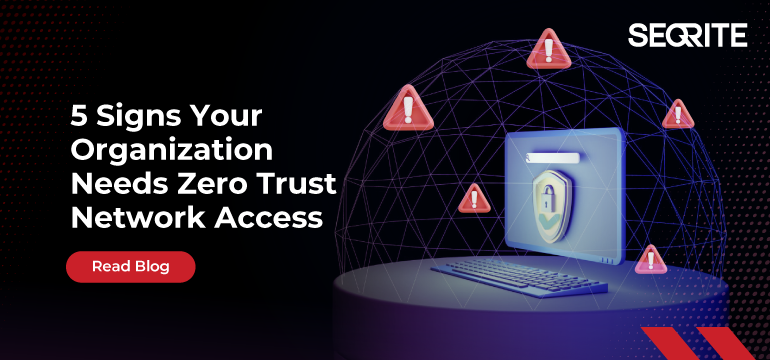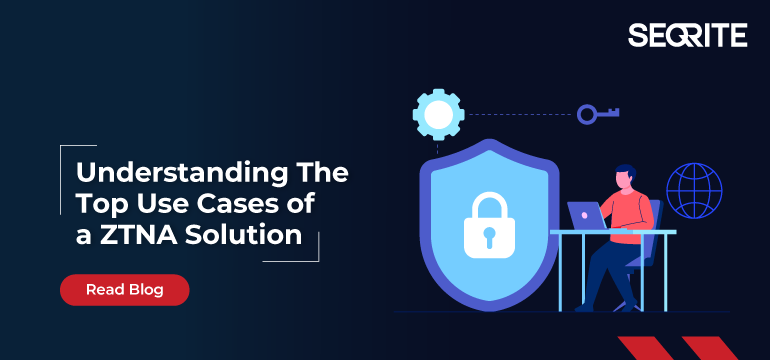In today’s hyperconnected business environment, the question isn’t if your organization will face a security breach, but when. With the growing complexity of remote workforces, cloud adoption, and third-party integrations, many businesses are discovering that their traditional security tools are no longer enough to keep threats at bay.
Enter Zero Trust Network Access (ZTNA)—a modern security model that assumes no user, device, or request is trustworthy until proven otherwise. Unlike traditional perimeter-based security, ZTNA treats every access request suspiciously, granting application-level access based on strict verification and context.
But how do you know when it’s time to make the shift?
Here are five tell-tale signs that your current access strategy may be outdated—and why Zero Trust Network Access could be the upgrade your organization needs.
-
Your VPN is Always on—and Always a Risk
Virtual Private Networks (VPNs) were built for a simpler time when employees worked from office desktops, and network boundaries were clear. Today, they’re an overworked, often insecure solution trying to fit a modern, mobile-first world.
The problem? Once a user connects via VPN, they often gain full access to the internal network, regardless of what they need. One compromised credential can unlock the entire infrastructure.
How ZTNA helps:
ZTNA enforces the principle of least privilege. Instead of exposing the entire network, it grants granular, application-specific access based on identity, role, and device posture. Even if credentials are compromised, the intruder won’t get far.
-
Remote Access is a Growing Operational Burden
Managing remote access for a distributed workforce is no longer optional—it’s mission-critical. Yet many organizations rely on patchwork solutions that are not designed for scale, leading to latency, downtime, and support tickets galore.
If your IT team constantly fights connection issues, reconfigures VPN clients, or manually provisions contractor access, it’s time to rethink your approach.
How ZTNA helps:
ZTNA enables seamless, cloud-delivered access without the overhead of legacy systems. Employees, contractors, and partners can connect from anywhere, without IT having to manage tunnels, gateways, or physical infrastructure. It also supports agentless access, perfect for unmanaged devices or third-party vendors.
-
You Lack Visibility into What Users do After They Log in
Traditional access tools like VPNs authenticate users at the start of a session but offer little to no insight into what happens afterward. Did they access sensitive databases? Transfer files? Leave their session open on an unsecured device?
This lack of visibility is a significant risk to security and compliance. It leaves gaps in auditing, limits forensic investigations, and increases your exposure to insider threats.
How ZTNA helps:
With ZTNA, organizations get deep session-level visibility and control. You can log every action, enforce session recording, restrict clipboard usage, and even automatically terminate sessions based on unusual behavior or policy violations. This isn’t just security, it’s accountability.
-
Your Attack Surface is Expanding Beyond Your Control
Every new SaaS app, third-party vendor, or remote endpoint is a new potential doorway into your environment. In traditional models, this means constantly updating firewall rules, managing IP allowlists, or creating segmented VPN tunnels—reactive and complex to scale tasks.
How ZTNA helps:
ZTNA eliminates network-level access. Instead of exposing apps to the public or placing them behind perimeter firewalls, ZTNA makes applications invisible, only discoverable to users with strict access policies. It drastically reduces your attack surface without limiting business agility.
-
Security and User Experience Are at War
Security policies are supposed to protect users, not frustrate them. But when authentication is slow, access requires multiple manual steps, or users are locked out due to inflexible policies, they look for shortcuts—often unsafe ones.
This is where shadow IT thrives—and where security begins to fail.
How ZTNA helps:
ZTNA provides context-aware access control that strikes the right balance between security and usability. For example, a user accessing a low-risk app from a trusted device and location may pass through with minimal friction. However, someone connecting from an unknown device or foreign IP may face additional verification or be denied altogether.
ZTNA adapts security policies based on real-time context, ensuring protection without compromising productivity.
In Summary
The traditional approach to access control is no match for today’s dynamic, perimeterless world. If you’re experiencing VPN fatigue, blind spots in user activity, growing exposure, or frustrated users, it’s time to rethink your security architecture.
Zero Trust Network Access isn’t just another security tool—it’s a more innovative, adaptive framework for modern businesses.
Looking to modernize your access control without compromising on security or performance? Explore Seqrite ZTNA—a future-ready ZTNA solution built for enterprises navigating today’s cybersecurity landscape.

